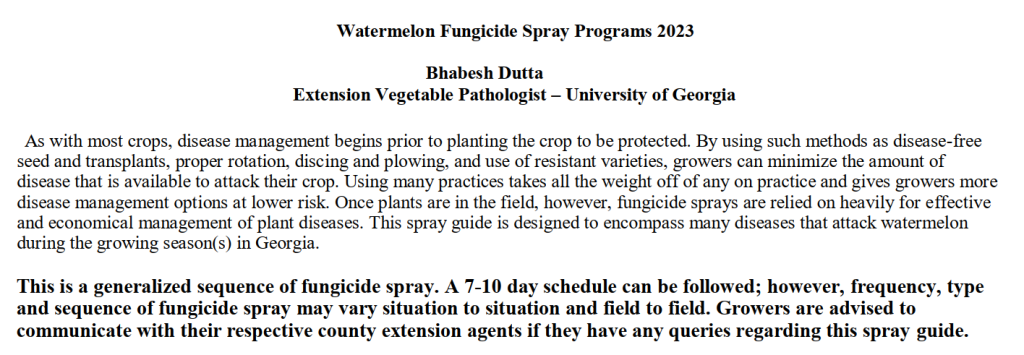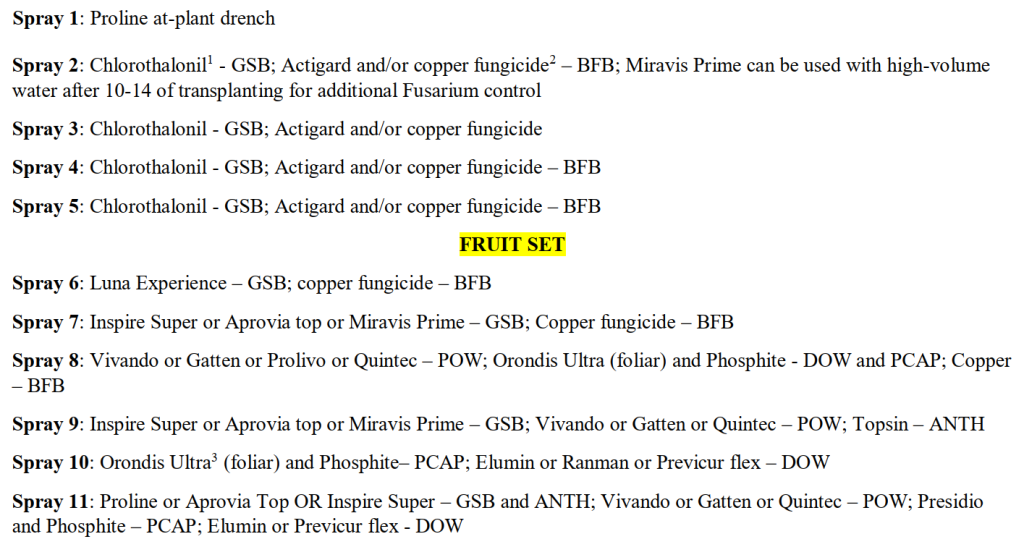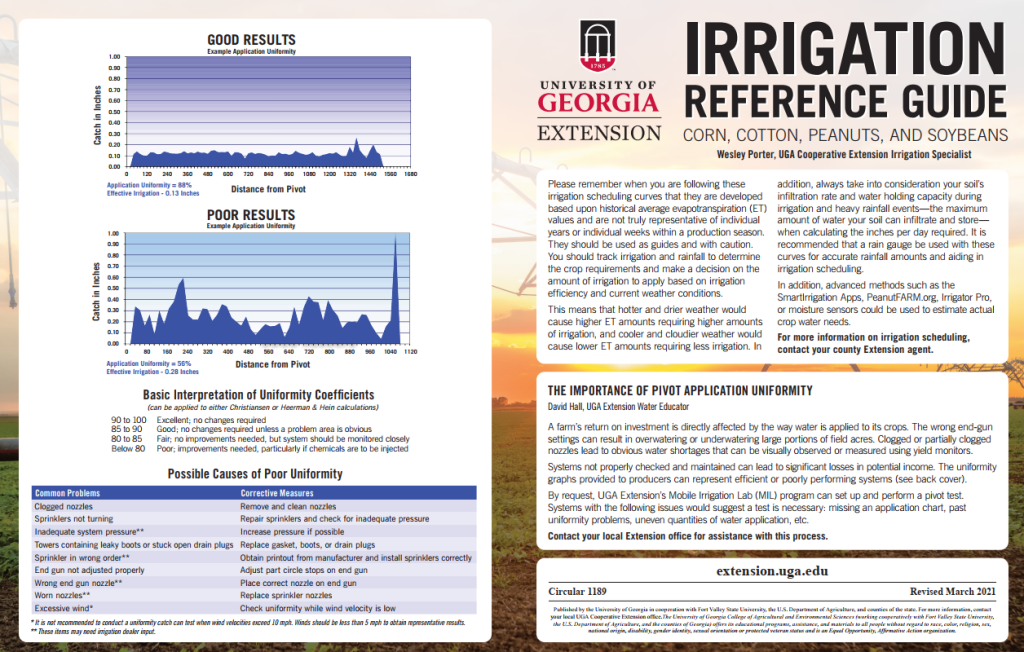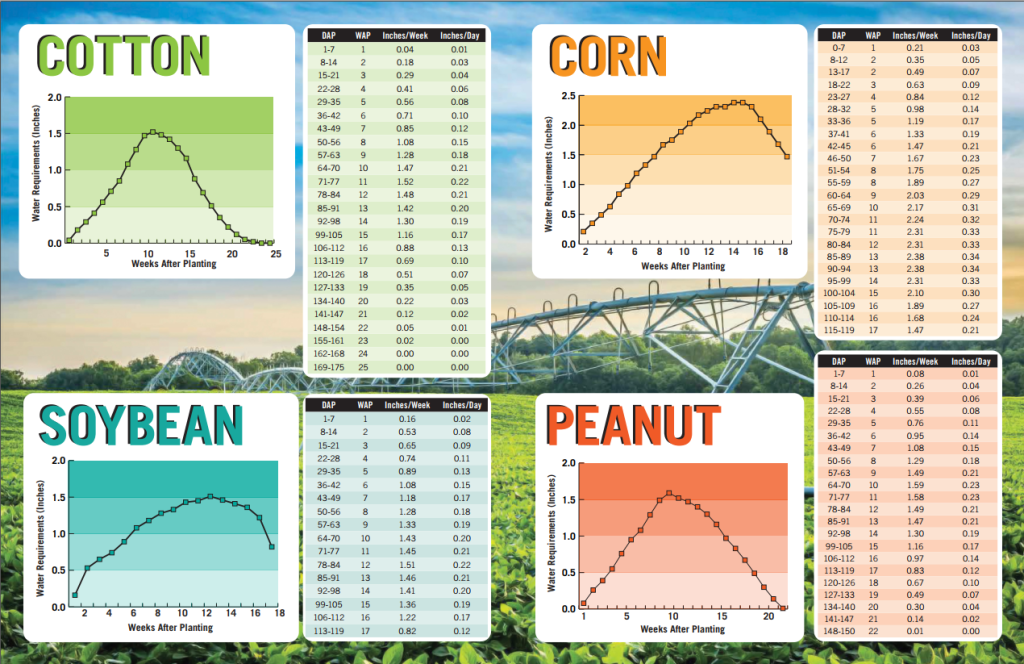Peanut planting time has arrived in Georgia, and that means thrips season is here as well. Many of the decisions a peanut grower makes at planting will affect the risk of thrips infestation and the risk of Tomato spotted wilt disease. By now, growers should have a plan for managing thrips and TSWV, but here are a few reminders that you might find useful.
- Use Peanut Rx to assess risk to thrips and TSWV. https://peanuts.caes.uga.edu/extension/peanut-rx.html The TSWV risk factors found in Peanut Rx are REAL. The validity of the risk index has been tested and proven again and again for more than two decades. If a grower is looking for a way to reduce the risk of TSWV infection, he or she should look no further than Peanut Rx. If it is not on Peanut Rx, it probably does not matter.
- Every peanut field in Georgia will have thrips, and thrips feeding reduces yield. Thrips management is a wise investment.
- Killing thrips is a good thing to do, and there are several insecticide options from which to choose. But as odd as it may seem, killing thrips does not reduce the risk of TSWV. The only chemical known to reduce the risk of TSWV in peanut is phorate (Thimet). If you have questions about why this is true, contact your local UGA county Extension agent.
- When the seed furrow is closed, opportunities for TSWV management are over. We can make foliar insecticide applications to manage thrips, but these sprays will NOT reduce the risk of TSWV.
Tomato spotted wilt disease was common in Georgia peanuts in 2022, and there is a lot of concern about the disease going into the 2023 season. While no one can predict year to year variations in virus abundance, the factors that affect risk are well known and have not changed over the last two decades. We planted a lot of the 2022 crop in a high risk environment for TSWV; high risk coupled with relatively high virus levels resulted in increased disease incidence. There are no new miracle treatments for thrips or TSWV in 2023, but we can do a very good job of managing both by using a combination of practices (found in Peanut Rx) that minimize risk.
When to Start Spraying for Pecan Scab and Fungicide Schedule Options
Lenny Wells –
To be perfectly clear, the schedules offered here are not an advocation for a strict calender spray schedule. Obviously, scab development is based on the period of leaf wetness, which is not based on a calender date but is influenced to a high degree by the frequency of rainfall. These schedules are simply to be used as a framework on which to base your program. They incorporate what we know about the best use of each fungicide. Some fungicides like Phosphite and the group 3 + group 11 materials have better activity on leaf scab. Others, like Elast, Tin, and Miravis Top offer the highest degree of nut scab protection. There are also other labeled materials that could be worked into the schedule. The following is simply an example.
If it rains frequently, you need to tighten up your schedule on medium and high susceptibility cultivars. If it is realtively dry and the pressure is low, you can space the schedule out more early on in the season, especially with medium susceptibility cultivars. Once nut sizing begins (June) susceptible cultivars should never go more than 14 days between sprays, even if conditions are dry because we can get enough humidity and wetness from the dew to drive scab development even without rain. With frequent rainfall you will need to tighten up to 10 days or less between sprays. A good rule of thumb is to tighten the spray interval when you get 2 or more rain events (0.10″ or more) before the 14 day standard interval is up during nut sizing.
As we did last year, we have broken the cultivars down into 3 main categories (Low, Medium and High) as seen below. The 4th category–Medium/High — consists of cultivars that could fall into either of these 2 categories. Under most conditions they would have no scab problems under a regular spray program but in certain locations (below Highway 280, at low elevation, in crowded orchards) they will scab more and would need a high input program. Growers should use their own judgement and experience about where to place these. I am available to discuss this with any growers who are unsure about where their orchard fits.



Guide – Watermelon Fungicide Spray Program



UGA Irrigation Reference Guide


Corn and Pecan commodity commissions will be having a vote on their respective assessment rates during the month of May. See their fliers below.

